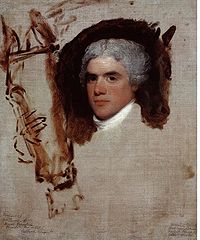Annotation:Caledonian Beauty (1) (The)
X:1 T:Caledonian Beauty [1], The M:2/4 L:1/8 N:"as Perform'd by Mr. Rickets" Q:"Allegro" B:John Watlen - The Celebrated Circus Tunes (Edinburgh, 1791, p. 3) Z:AK/Fiddler's Companion K:C cc d/c/d/B/|cc d/c/d/B/|ccdd| ee f/d/B/G/| cc d/c/d/B/|cc d/c/d/B/|ccdd|e/f/d/B/ c:| |:cc'2 g/e/|d f2 e/d/|cece|d/c/B/A/ G2| c c'2 g/e/|d f2 e/d/|cece|g/f/e/d/ cz:| |:G>FEG|AA Fz|dd c/B/A/G/|c/d/e/c/ GG| G>FEG|AA Fz|dd B/c/d/B/|cc c2:|]
CALEDONIAN BEAUTY [1], THE. Scottish, Country Dance (2/4 time). C Major (Watlen): D Major (Aird). Standard tuning (fiddle). AABBCC. The tune appears first in print in John Watlen's Celebrated Circus Tunes (Edinburgh, 1791), where it was one of several tunes Watlen indicated were danced by "Mr. Rickets". John Bill Ricketts was the star equestrian dancer at Edinburgh's Royal Circus between 1790 and 1792, a venue that was an expansion of Phillip Astley's London-based Royal Circus. The circus provided an alternative entertainment to concerts, opera and the theater, where equestrian acts, acrobatics, song and dance, and pantomime were performed.

In 1792, the the year after Watlen's publication, the Scots-born Ricketts emigrated to America, where he became a circus promoter himself and flourished through the 1790's till about 1800, when his Philadelphia enterprise was destroyed in a fire on Dec. 17, 1799. He reportedly delighted his audiences by dancing hornpipes on the backs of galloping horses (Tribe), and toward the end of his career hired another famous American hornpipe dancer, John Durang, to produce pantomimes for him. Alan Jabbour (in "American Fiddle Tunes") says that circuses under his name appeared in New York City, Philadelphia, Norfolk, Charlestown, Albany, Boston, Hartford, and Montreal. Thus we have a performing and circus connection with three of the most popular hornpipes of all time: "Astley's Hornpipe," "Rickett's Hornpipe" and "Durang's Hornpipe (1)." See Annotation:Rickett's Hornpipe for more.

